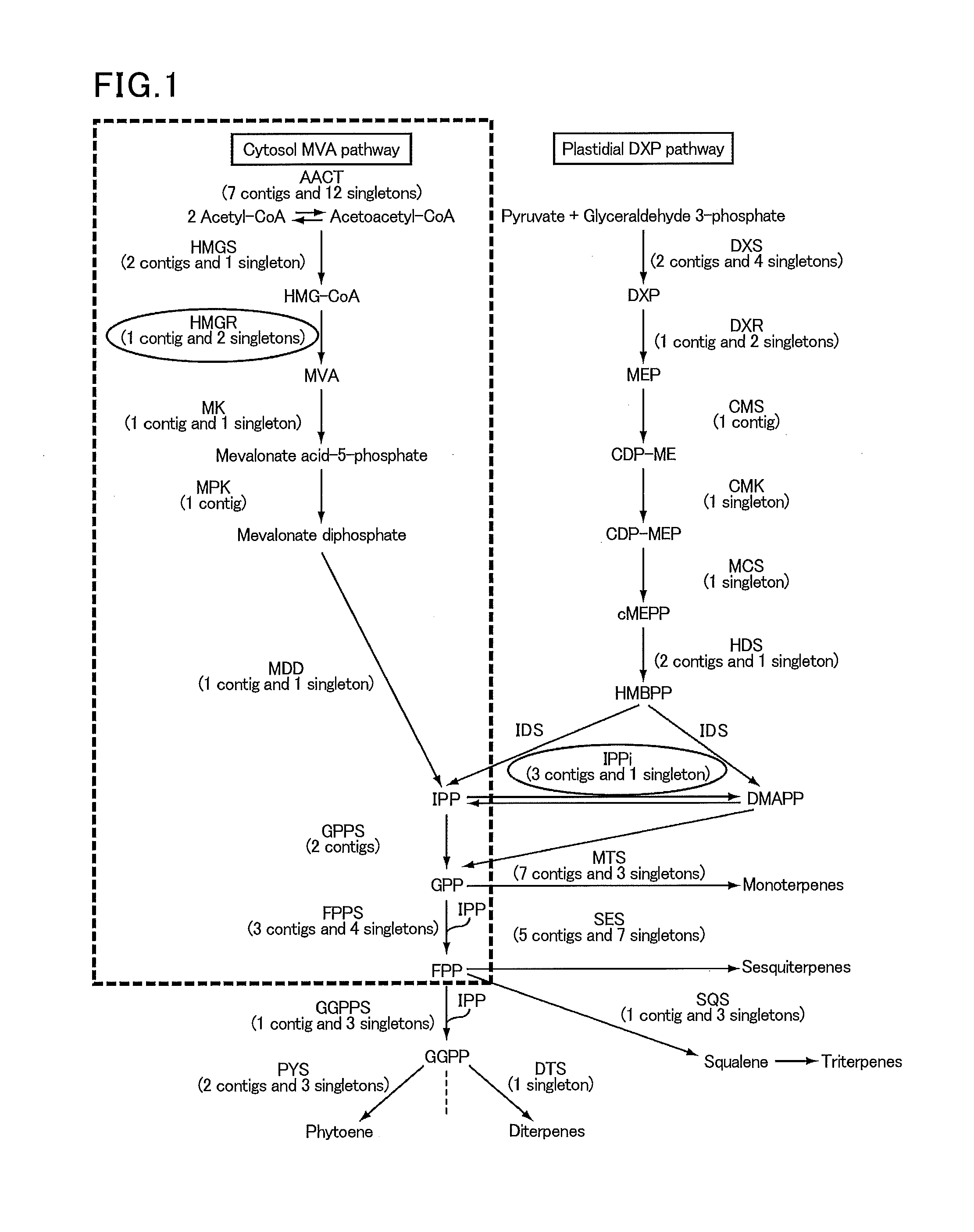Method for regulating expression of specific protein using photoresponsive transcriptional factor, isoprenoid-producing plant having gene encoding photoresponsive transcriptional factor introduced thereinto, and method for producing polyisoprenoid using said isoprenoid-producing plant
a technology of photoresponsive transcriptional factor and specific protein, which is applied in the direction of plant genotype modification, biochemistry apparatus and processes, fermentation, etc., can solve the problems of difficult to greatly increase the production of natural rubber using i>hevea brasiliensis, cracks may easily be generated in bark, and the period during which natural rubber can be extracted is limited to 20 to 30 years, so as to enhance the overall pathway of polyisoprenoid biosynthesis and increase the production of polyisoprenoid
- Summary
- Abstract
- Description
- Claims
- Application Information
AI Technical Summary
Benefits of technology
Problems solved by technology
Method used
Image
Examples
examples
[0110]The present invention will be specifically described by reference to examples. The examples are not to be construed as limiting the present invention.
(Preparation of Promoter Sequence)
[0111]DNA fragments containing the gene encoding HMG-CoA reductase, IPP isomerase, cis-prenyltransferase, or small rubber particle protein from leaves of Hevea brasiliensis (the base sequences of cis-prenyltransferase, HMG-CoA reductase, IPP isomerase, and SRPP are set forth in the sequence listing as SEQ ID NOs:7, 9, 11, and 13, respectively) and its promoter were cloned in the following manner. First, genomic DNA was extracted from leaves of Hevea brasiliensis. The extraction was accomplished using a commercial genomic DNA extraction kit. The genes with their promoters were amplified by TAIL-PCR using random primers shown as Primers 1 to 6 and primers corresponding to the genes.
(SEQ ID NO: 15)Primer 1: 5′-ntcgastwtsgwgtt-3′(SEQ ID NO: 16)Primer 2: 5′-ngtcgtswganawgaa-3′(SEQ ID NO: 17)Primer 3: ...
PUM
| Property | Measurement | Unit |
|---|---|---|
| diameter | aaaaa | aaaaa |
| pH | aaaaa | aaaaa |
| isoprenoid chain elongation | aaaaa | aaaaa |
Abstract
Description
Claims
Application Information
 Login to View More
Login to View More - R&D
- Intellectual Property
- Life Sciences
- Materials
- Tech Scout
- Unparalleled Data Quality
- Higher Quality Content
- 60% Fewer Hallucinations
Browse by: Latest US Patents, China's latest patents, Technical Efficacy Thesaurus, Application Domain, Technology Topic, Popular Technical Reports.
© 2025 PatSnap. All rights reserved.Legal|Privacy policy|Modern Slavery Act Transparency Statement|Sitemap|About US| Contact US: help@patsnap.com

